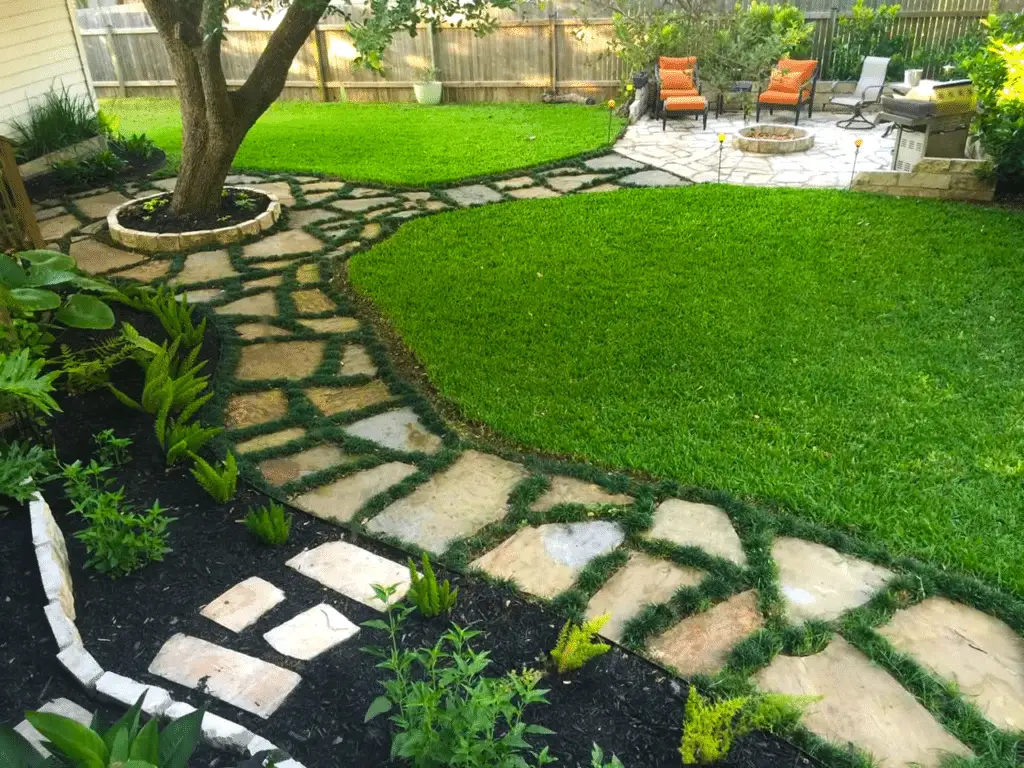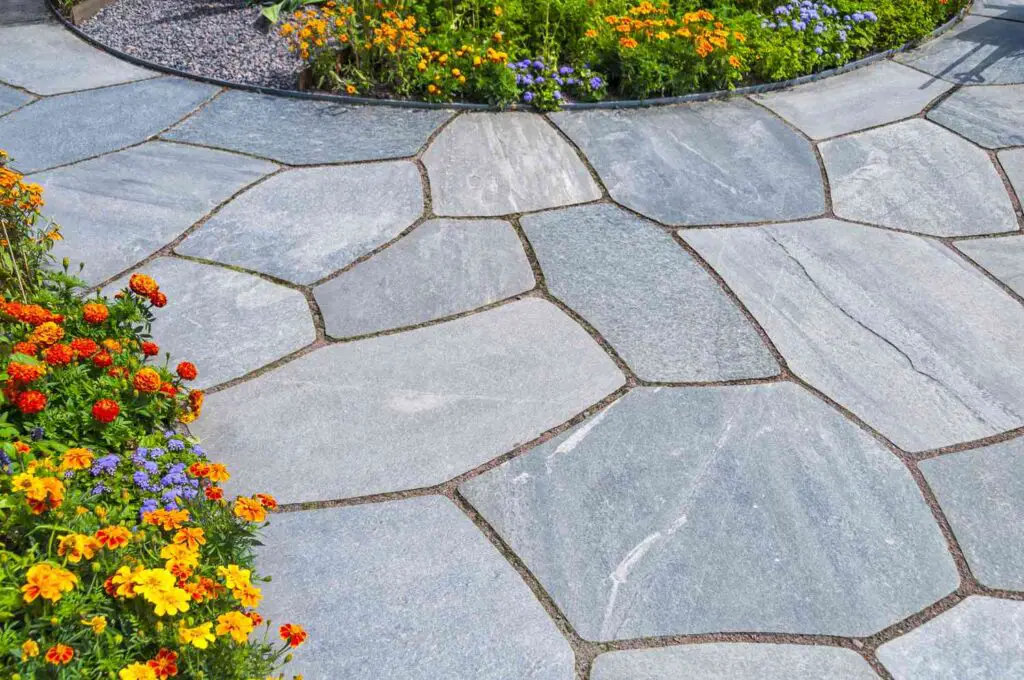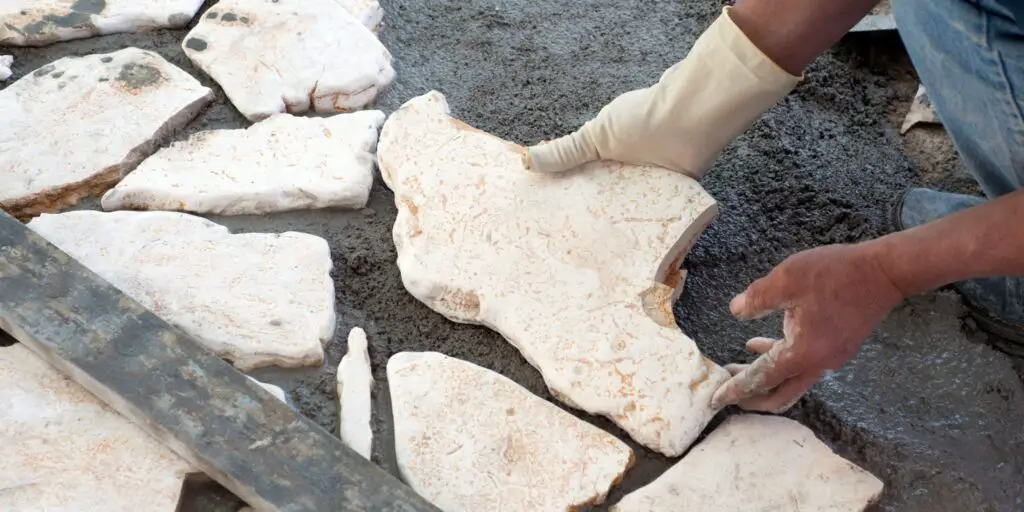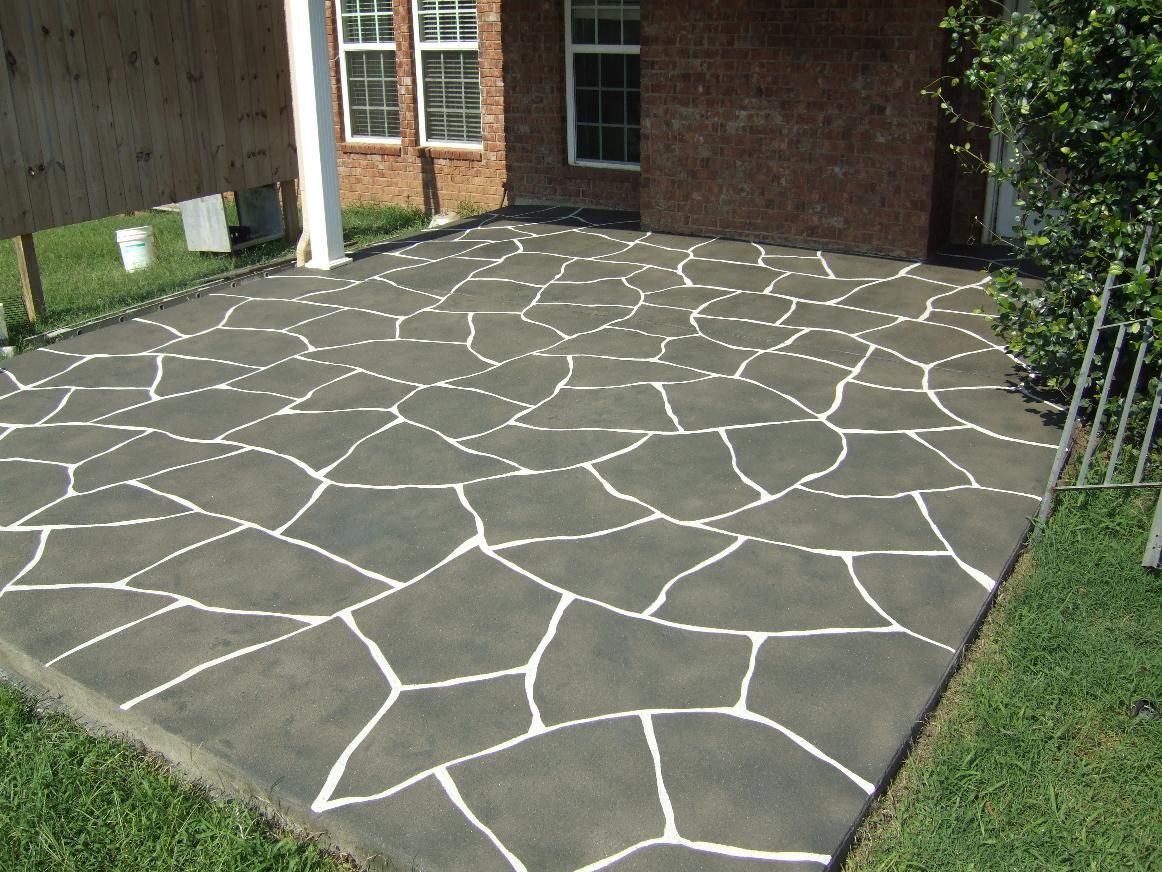How To Build A Flagstone Patio
Introduction
How To Build A Flagstone Patio: Before you begin, it’s essential to plan carefully and consider factors such as the size and layout of your patio, the type of flagstone you want to use, and the overall design concept. You’ll also need to assess the site’s drainage and make any necessary adjustments to ensure the longevity and stability of your patio home. A flagstone patio is not just about construction; it’s an enjoyable and fulfilling experience that allows you to connect with nature and take pride in your creation.
So, embrace your creativity, put on your thinking cap, and let’s get started on transforming your outdoor space into a captivating oasis that you, your family, and your friends will cherish for years to come. The process, offering practical advice on how to source the best materials, prep the area, and create a solid foundation for your flagstone masterpiece. We’ll also explore various methods of setting the stones, whether it’s the traditional dry-laid approach or using mortar to achieve a more permanent bond.
Whether you’re a seasoned DIY enthusiast or a first-time homeowner eager to take on a rewarding challenge, we’ve got you covered. From selecting the right materials to preparing the site, laying the flagstones, and finishing touches, you’ll learn all the essential techniques and tips to make your patio project a resounding success. A flagstone patio exudes charm and sophistication, providing a serene retreat for relaxation and entertainment.

What do you put under a flagstone patio?
For a lasting installation, a dry-set stone patio does need a foundation, though. It’s best to start with several inches of compacted gravel, followed by a layer of stone dust, also called decomposed granite, or DG.
To prevent weed growth and stabilize the base material, it’s advisable to lay down a geotextile fabric over the compacted soil before adding the base layer. This permeable fabric allows water to pass through while keeping weeds and roots from penetrating the patio surface.
Adding edge restraints, such as plastic or metal paver edging, is essential to keep the flagstones in place and prevent them from shifting outward. Edge restraints also help maintain the structural integrity of your patio and create clean, defined edges.
Once the base layer is in place, you’ll need to add a leveling material like sand or stone dust to fine-tune the surface. This step ensures that the flagstones will be laid evenly and provides a smooth, level area for your patio.
Choosing the right flagstone is vital to the overall performance and appearance of your patio. Opt for stones with a consistent thickness, as this will make the leveling process more manageable. Irregularly shaped flagstones can be charming but may require more effort to fit them together neatly.
The final layer beneath the flagstones is the setting material, which holds the stones in place. The choice between dry-laid and wet-laid (using mortar) will depend on your preference and the intended use of your patio
How deep should a flagstone patio be?
Dig deep enough for 3-4″ of packed gravel base, 1″ of leveling material, and paver thickness. Typically, drill down approximately 6 inches. You can sometimes put dirt around the patio, but you must prepare beforehand.
Knowing the soil type on which you’ll build your patio is vital. A deep base may not be needed in well-draining, solid soil. To prevent settling and heave in clay-heavy or moisture-retaining soil, a deeper base with better drainage is needed.
Consider your flagstone patio’s use. A thinner base may work for infrequent use or light foot activity. If your patio is a central meeting space with furniture, significant foot traffic, and frequent entertaining, a deeper and stronger foundation will be needed to manage the extra weight and stress.
Flagstone patio depth depends on climate. In freeze-thaw locations, the base must be deep enough to withstand freezing conditions. Freezing water can harm the patio, but a deeper base with good drainage will help.
The ideal depth depends on the foundation material (gravel or sand) and setting process (dry-laid or wet-laid with mortar). Wet-laid flagstone patios with mortar need a thicker base to accommodate the mortar and stones, while dry-laid patios need less depth but a stable base for leveling.
What is the disadvantage of flagstone patio?
Flagstone can stand up to temperature extremes, but it is not immune to them. Flagstone can become extremely hot in the sun, and it can become very slippery in the rain. Since hot temperatures and heavy rains are common in Arizona, you might want to consider adding a cover to your patio to avoid these inconveniences.
One of the primary disadvantages of a flagstone patio is its cost. Flagstone, especially the high-quality and aesthetically pleasing varieties, can be relatively expensive compared to other paving materials like concrete or pavers. Additionally, the labor and expertise required for proper installation can add to the overall cost of the project.
The installation process for a flagstone patio can be labor-intensive, especially if you choose the traditional dry-laid method. Each stone must be individually placed and leveled, which requires time, skill, and attention to detail. Wet-laid installations with mortar can also be demanding, as it involves mixing and applying mortar to secure the stones in place.
While the irregular shapes and natural beauty of flagstone are appealing to many, it can also create an uneven surface. This unevenness may not be suitable for certain activities like placing furniture or walking with high heels. It can also make snow removal and cleaning more challenging.
Flagstone patios may require regular maintenance to keep them in optimal condition. The gaps between the stones can collect debris, dirt, and even weed growth, which may need periodic cleaning and weeding. In regions with harsh weather conditions, maintenance may involve re-leveling stones or repairing any damages caused by freeze-thaw cycles.
What cement mix for flagstone?
Mix up a soupy mixture of 1 part Portland cement and 1 part sand. Using a grout bag, fill in the space between the stones slightly above the stones. Be careful not to get grout on surface of the stone. When you have used up one full grout bag, use a slicker or narrow trowel to press the cement between the stones.
In wet-laid flagstone installations, mortar is used to secure the stones in place. Mortar acts as the adhesive that bonds the flagstones to the base and each other, creating a solid and permanent surface. Some contractors may add additives to the mortar mix to enhance certain properties, such as improved workability, increased bond strength, or water resistance.
The sand used in the mortar mix should be well-graded and free of impurities. A mix of 3 parts sand to 1 part cement (3:1 ratio) is often suitable for flagstone installations. Water is added to the mix to achieve the desired consistency and workability. It’s crucial to follow the manufacturer’s recommendations for the correct water-to-cement ratio.
In dry-laid flagstone installations, no mortar is used between the stones. Instead, the flagstones are set directly on a well-prepared base, such as a layer of compacted gravel or sand. The key to a successful dry-laid installation is using stone dust or sand as the leveling material between the flagstones. This material fills the gaps and ensures a stable, level surface.
How do you lay a patio without cement?
The best alternative to cement is to use a sub-base of sand. While this isn’t too tricky (see our ‘how to lay paving slabs on sand’ section) it isn’t the most secure way of laying a patio. Unfortunately, the slabs will often begin to sink and shift eventually, plus, weeds will make their way through the sand base.
Begin by selecting the area for your patio and marking its boundaries. Clear the site of any vegetation, debris, or rocks. Excavate the area to a depth of about 6 inches, ensuring the surface is level and well-drained.
Next, add a base layer of well-compacted gravel or crushed stone. This base material serves as a stable foundation for the flagstones and helps with drainage. Compact the base thoroughly using a plate compactor or hand tamper to create a solid, level surface.
After the base is in place, add a layer of stone dust or sand on top. Stone dust or sand is essential for leveling the flagstones and creating a stable surface between them. Use a rake to spread the stone dust evenly across the entire patio area.
Carefully place the flagstones on top of the stone dust or sand, starting from one corner and working your way outward. Ensure each stone is level and properly spaced from its neighbors. Use a rubber mallet to gently tap the flagstones into place and adjust their position as needed.
As you lay each flagstone, regularly check for levelness and stability. Make adjustments as necessary to maintain a uniform surface. It’s important to avoid creating any uneven spots or tripping hazards.
What cement mix for laying flagstones?
Use a brick jointing tool to pack the mix into the slab gaps for a smooth finish. Mortar can stain slabs, so avoid it.
Mixing cement for wet-laid or dry-laid flagstone installations must follow the manufacturer’s instructions for the cement and additives.
Both installation methods require a compacted and level base.
Wet-laid mortar must cure before significant traffic or loads are applied to the patio.
Sealing flagstones and mortar after installation can prevent discoloration and deterioration.
Talk to a contractor or building supplier about the appropriate cement mix for flagstone installation.
Leveling between flagstones with stone dust or sand is essential for dry-laid installations. This substance seals gaps and levels the surface.
Contractors may add chemicals to mortar to improve workability, bond strength, or water resistance.

How long does flagstone last?
With flagstone, weather can crack mortar joints and affect stone levelness, so you may need to repair them.
Natural stone flagstones vary in hardness and durability. Typical flagstones are sandstone, limestone, slate, and granite. One of the toughest stones, granite, is the most durable and can survive intensive use and harsh weather. Sandstone and limestone are also popular and durable.
A flagstone patio or pathway’s lifespan depends on proper placement. Flagstones must be sturdy and leveled with a good base, drainage, and setting materials. A properly laid flagstone surface resists settling, heaving, and cracking, increasing its durability.
Flagstone longevity depends on climate and surroundings. Extreme temperatures, freeze-thaw cycles, heavy rains, and salt and chemical exposure may accelerate flagstone deterioration. Flagstone may be more sensitive to freezing and thawing in cold winters.
Foot traffic and usage affect flagstone durability. Pathways and patios used for entertaining may wear down faster. Flagstone can last longer if cleaned, sealed, and filled between stones.
How thick should mortar be under flagstone?
After setting a few stones and establishing your grade, grout the seams tightly and wipe excess mortar with a damp sponge.
Flagstone thickness affects mortar bed requirements. Thicker flagstones can be put on a narrower mortar bed, but thinner stones may need a thicker layer.
If you place flagstones using mortar, the spaces between them will affect the mortar bed thickness. Filling larger gaps may require more mortar for a secure bond.
A good base preparation is essential for flagstone installation. Check the base for compaction and levelness before applying mortar. A stable base will stabilize the patio.
Methods of applying mortar might also alter thickness. To fix the flagstones, some installers use a larger mortar bed and press them in, while others use a thinner, even coating.

Conclusion
Throughout this process, you’ve learned the importance of careful planning, from selecting the right materials and designing a layout that complements your space to preparing the site and ensuring proper drainage. You’ve explored different techniques for setting the flagstones, from the classic dry-laid method, which offers flexibility and easy adjustments, to the more permanent mortar approach, providing a solid and long-lasting foundation. Remember, a flagstone patio is not just a destination but an invitation—to connect with nature, to unwind, and to create cherished memories with loved ones.
Building a flagstone patio isn’t just about the physical construction; it’s about connecting with the earth and finding harmony with your surroundings. As you worked with the unique shapes and colors of the flagstones, you’ve imbued your patio with a touch of your flagstone patio personality, making it a true reflection of your style and taste. Take the time to enjoy every moment spent in this natural haven, for it is a testament to your dedication and passion for crafting something extraordinary.
This project has also allowed you to appreciate the wonders of nature, as you’ve harnessed the raw beauty of natural stone to craft a space that seamlessly blends with the outdoors. Your patio will now serve as a serene retreat for relaxation, a perfect gathering spot for friends and family, and a canvas for countless cherished memories. Remember, building a flagstone patio is an art, and like any art, it’s a continuous journey of improvement and exploration. As the seasons change and the years go by, your patio will evolve and age gracefully, creating a unique character all its own.








